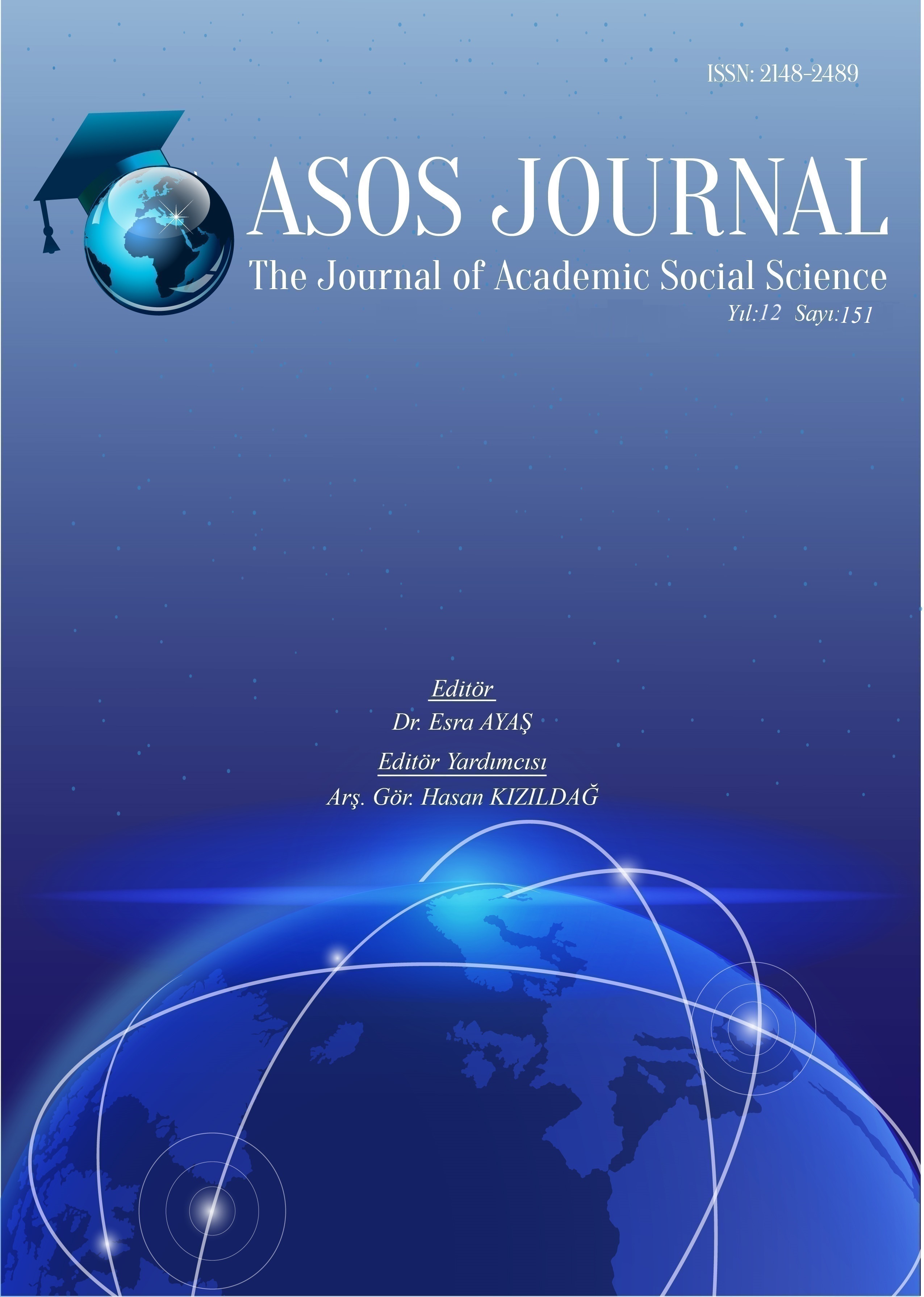Author :
Abstract
Nüfus sayımı kentlerin sosyo-demografik özelliklerinin ortaya konulması açısından oldukça önemli olmuştur. Genellikle yaş, cinsiyet, etnik grup, medeni durum, eğitim seviyesi, meslek ve coğrafi dağılım gibi faktörlere odaklanır. Nüfus istatistikleri çoğunlukla ekonomik, sosyal ve planlama amaçları için kullanılır. Osmanlı Devleti’nde II. Mahmut Dönemi’nde ülkenin ekonomik ve beşerî kaynakları, askere alınacak nüfus ve vergi mükelleflerinin tespiti amacı ile nüfus sayımı yapılmıştır. Osmanlı coğrafyasının değişik yerlerinde olduğu gibi Besni’ye bağlı olan nahiye ve karyelerinde de nüfus sayımı uygulanmıştır. Çalışmanın kaynağı 1835 tarihli 40695 numaralı Başbakanlık Osmanlı Arşivi’nde bulunan nüfus defteridir. İlgili defter kayıtlarının incelenmesi neticesinde, Besni kazasına bağlı karyeler tespit edilmiş olup, toplam nüfus miktarı, nüfusun karyelere göre dağılım oranı, kazada yer alan en yüksek ve en düşük nüfuslu karyeler ve nüfusun yaş gruplarına göre dağılımı belirtilmiştir. Ayrıca karyelerdeki Müslüman erkeklerin adları, hane sayısı, çalışan nüfusun meslek kollarına göre ayrımı, kullanılan lakaplar, askerler, yetimler, kaza dışında bulunanlar ve kişilerin fiziki özellikleri ortaya koyulmuştur.
Keywords
Abstract
The census has ever been very important in terms of revealing the socio-demographic characteristics of cities. It generally focuses on factors such as age, gender, ethnic group, marital status, education level, occupation and geographical distribution. Population statistics are mostly used for economic, social and planning purposes. In the Ottoman Empire during the Period of Mahmud II, a census was conducted to determine the economic and human resources of the country, the population to be recruited, and taxpayers. The census was carried out also in the townships (“nahiyes”) and villages (“karyes”) subordinated to the county of Besni as well as in the various parts of the Ottoman geography. The source of the study is the population book (logbook) retained in the Ottoman Archives of the Prime Minister’s Office dated 1835 and numbered 40695. As a result of the examination of the relevant book records, the villages (“karyes”) of the county (“kaza”) of Besni were determined, and the total number of population and the distribution ratio of the population as per villages (“karyes”) , the villages (“karyes”) with the highest and lowest population in the county (“kaza”) and the distribution of the population according to age groups were specified. In addition, the names of the Muslim men, the number of households, the division of the working population according to the fields of profession, the nicknames used, the soldiers, the orphans, the those outside the county (“kaza”) and physical characteristics of the people in the villages (“karyes”) were revealed.





